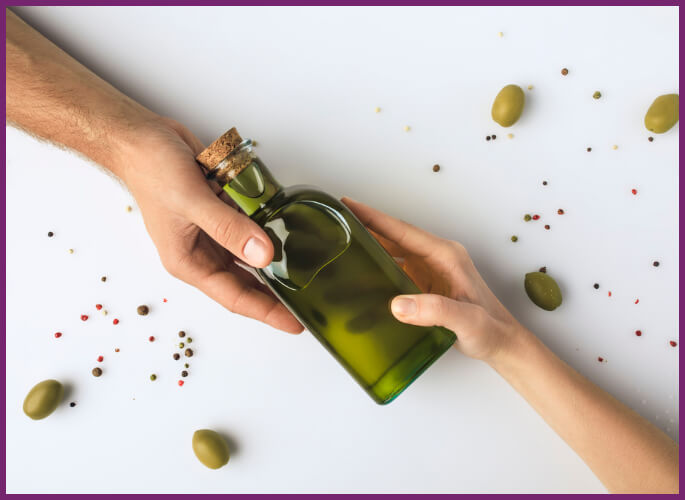People have used sexual lube for hundreds of years, but advanced formulas are obviously a new phenomenon.
A good read: The Ultimate Guide to Sexual Lubricants
There's a great deal of fascinating research showing how sexual aids developed along with various civilizations.
If you've ever wondered what ancient people used for personal lube, there are a few interesting answers.
The most common and obvious lubes are vegetable oils, which often played in dozens of growing agricultural societies.
Early Greeks used olive oil for just about everything, including lubrication; the first written references to olive oil as a sexual lubricant date back to 350 B.C.
In one of his writings, the Greek philosopher Aristotle references olive oil's contraceptive powers mixed with cedar oil, lead, and frankincense.
From Greek texts, we also know that women would also use leather dildos lubricated with olive oil, and it stands to reason that olive oil was probably the go-to lubricant for that time period.

The Romans also used olive oil for sex and masturbation, and like the Greeks, they tried to incorporate contraceptives into their formulas.
Pliny, the great Roman thinker, suggested a mixture of olive oil, pigeon droppings, and wine.
Olive oil kept its popularity through the 16th century, which, incidentally, is around the time when the word "dildo" entered our vocabulary.
Personal lubricants certainly weren't confined to the West. In Japan's Edo period (1603-1868), couples used Tororo-jiru, a slick substance made by grating Chinese yams.
Early Chinese condoms from the animal intestine or treated linen were often coated with a few vegetable oil drops to facilitate penetration.
As you might expect, people in socially conservative societies were less likely to use lubricants (or, at least, less compelled to write about it).
In the 19th century, gynecologists prescribed pelvic massages to women who couldn't produce enough natural lubrication.
A good read: What is Vaginal Atrophy, and Can My Lubricant Help?
The physician would massage the woman's clitoris until she had an orgasm, at which point she was pronounced cured.
These massages were also the go-to treatment for women who suffered from "excessive" lubrication, which is a testament to the repressive atmosphere of the time period.
The Invention of Modern Lubrication
Commercially prepared lubes didn't become popular until the early 20th century.
K-Y Jelly was introduced in 1904 as a surgical product. It is considered one of the first modern lubricants, as it uses a base consisting of methylcellulose and other ingredients commonly found in newer water-based products.
While it was not marketed for sexual use, its manufacturer began offering a non-sterile version for non-surgical use.
The sexual revolution of the 1960s made lubricants and other products more socially acceptable, and manufacturers like K-Y quickly shopped their products to a new audience.
The lubricant industry gained steam in the 1990s and 2000s, and the market now features hundreds of specially formulated products designed to please different types of users.
Modern lubricants are much safer than their forebears and much less likely to cause infections or foster microorganism growth.
We've certainly made major advances since the days of olive oil and Tororo-jiru, and personal lubricants will continue to help people enjoy themselves in safe, new, and exciting ways for centuries to come.












